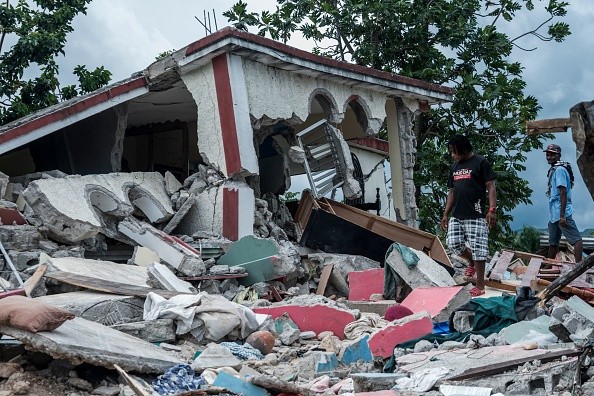For the last 20 months, seismic activity in central Idaho has been at an all-time high.
These earthquakes are aftershocks of a magnitude 6.5 earthquake that struck on March 31, 2020 - a typical example of a mainshock-aftershock series, according to the USGS. However, they did emphasize that these earthquakes are unrelated to the Yellowstone supervolcano, which is about 155 miles to the west.

The Second Greatest Recorded Earthquake in Idaho History
A severe 6.5 earthquake hit parts of Idaho on March 31, 2020, at 5:52 p.m. local time / 7:52 p.m. ET. The epicenter was around 90 miles north and east of Boise and struck at 5:52 p.m. local time / 7:52 p.m. ET. The powerful earthquake hit at a depth of 10 kilometers, according to the USGS.
The quake occurred well west of Yellowstone National Park, which is home to a massive supervolcano, as per Weather Boy.
The USGS said at the time that this powerful earthquake, the second greatest in Idaho history, was unrelated to any volcano, including Yellowstone. This earthquake, on the other hand, was a typical tectonic occurrence.
There have been over 4,300 aftershocks in the same area since the initial large earthquake in 2020, known as a mainshock. This increase in seismic activity has concerned some individuals, according to the USGS.
Will this earthquake prompt an eruption in Yellowstone? is a popular question after numerous earthquakes in the western United States. In the update on Nov. 29, the USGS asked, 'Is this seismicity connected to Yellowstone?' They did, however, supply a straightforward response: "no."
Aftershock of Tectonic Earthquakes
According to the USGS, aftershocks are a common and predictable occurrence after tectonic earthquakes, which occur as the Earth's crust travels past itself along fissures called faults.
As accumulated tectonic power is released, this movement typically occurs extremely fast. The fault movement's energy is transformed into seismic waves that propagate outward from the break.
The fault system of the Stanley earthquake ruptured for roughly 12 miles; it is part of the western United States Basin and Range province, which is expanding owing to tectonic activity and has no direct relationship to the magmatic system under Yellowstone.

Possible Eruption in Idaho
Idaho, on the other hand, is not without its share of volcanic threats. The USGS, on the other hand, believes that an eruption in Idaho might occur before Yellowstone.
"We typically see eruptions in the Craters of the Moon area every few thousands of years (most recent was ~2000 years ago). The last time Yellowstone erupted (which was a lava flow) was 70,000 years ago.
So, yes, the odds are extremely good that Idaho will experienced numerous eruptions before anything happens at Yellowstone." USGS wrote in response to concerns about the Idaho earthquake swarm on its Facebook page.
While a volcanic eruption is unlikely, Idaho is expected to see additional aftershocks. According to the USGS, following an earthquake, the crust near the ruptured fault will experience significant stress changes. Some regions of the crust will be less stressed as a result of the earthquake, while others will be more stressed.
As the crust adapts to its new level of stress, several minor earthquakes, known as aftershocks, occur in the vicinity of the mainshock.
Related Article : Can Pets Predict an Incoming Earthquake? Animals' Eerily Amazing Perception May be the Key
For more news, updates about earthquakes and similar topics don't forget to follow Nature World News!
© 2025 NatureWorldNews.com All rights reserved. Do not reproduce without permission.





